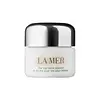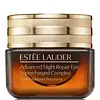What's inside
What's inside
 Key Ingredients
Key Ingredients

 Benefits
Benefits

 Concerns
Concerns

 Ingredients Side-by-side
Ingredients Side-by-side

Water
Skin ConditioningLaminaria Digitata Extract
Skin ProtectingButyrospermum Parkii Butter
Skin ConditioningButylene Glycol
HumectantPolyethylene
AbrasiveHydrogenated Polyisobutene
EmollientDimethicone
EmollientCetyl Esters
EmollientCetearyl Alcohol
EmollientMalachite
Skin ConditioningPolybutene
Isostearyl Neopentanoate
EmollientSilica
AbrasiveTrisiloxane
Skin ConditioningYeast Extract
Skin ConditioningCaffeine
Skin ConditioningCholesterol
EmollientAscophyllum Nodosum Extract
Skin ConditioningAsparagopsis Armata Extract
Skin ProtectingGelidium Cartilagineum Extract
Skin ProtectingSaccharomyces Lysate Extract
HumectantSesamum Indicum Seed Oil
EmollientEucalyptus Globulus Leaf Oil
PerfumingSesamum Indicum Seed
AbrasiveMedicago Sativa Seed Powder
Skin ConditioningHelianthus Annuus Seedcake
AbrasivePrunus Amygdalus Dulcis Seed Meal
AbrasiveSodium Gluconate
Skin ConditioningPotassium Gluconate
Skin ProtectingCopper Gluconate
Skin ConditioningCalcium Gluconate
HumectantMagnesium Gluconate
Skin ConditioningZinc Gluconate
Skin ConditioningTocopheryl Succinate
AntioxidantNiacin
SmoothingSigesbeckia Orientalis Extract
Skin ConditioningLactis Proteinum
Skin ConditioningSucrose
HumectantElaeis Guineensis Oil
EmollientMethyl Glucose Sesquistearate
EmollientCetearyl Glucoside
EmulsifyingGlycerin
HumectantAminomethyl Propanol
BufferingGlyceryl Distearate
EmollientTetraacetylphytosphingosine
Skin ConditioningLinoleic Acid
CleansingSorbitol
HumectantAcrylates/C10-30 Alkyl Acrylate Crosspolymer
Emulsion StabilisingSteareth-10
EmulsifyingMagnesium Ascorbyl Phosphate
AntioxidantVinyl Dimethicone/Methicone Silsesquioxane Crosspolymer
Sodium Hyaluronate
HumectantTocotrienols
Skin ConditioningHexylene Glycol
EmulsifyingPhytosphingosine
Skin ConditioningIsododecane
EmollientTocopherol
AntioxidantSqualene
EmollientPropylene Glycol Diheptanoate
EmollientPhytosterols
Skin ConditioningTrimethylsiloxysilicate
EmollientCaprylyl Glycol
EmollientAcetyl Hexapeptide-8
HumectantCarbomer
Emulsion StabilisingParfum
MaskingTourmaline
Disodium EDTA
Sodium Dehydroacetate
PreservativePhenoxyethanol
PreservativeLinalool
PerfumingLimonene
PerfumingBenzyl Salicylate
PerfumingCI 42090
Cosmetic ColorantCI 19140
Cosmetic ColorantCI 77891
Cosmetic ColorantCI 61570
Cosmetic ColorantWater, Laminaria Digitata Extract, Butyrospermum Parkii Butter, Butylene Glycol, Polyethylene, Hydrogenated Polyisobutene, Dimethicone, Cetyl Esters, Cetearyl Alcohol, Malachite, Polybutene, Isostearyl Neopentanoate, Silica, Trisiloxane, Yeast Extract, Caffeine, Cholesterol, Ascophyllum Nodosum Extract, Asparagopsis Armata Extract, Gelidium Cartilagineum Extract, Saccharomyces Lysate Extract, Sesamum Indicum Seed Oil, Eucalyptus Globulus Leaf Oil, Sesamum Indicum Seed, Medicago Sativa Seed Powder, Helianthus Annuus Seedcake, Prunus Amygdalus Dulcis Seed Meal, Sodium Gluconate, Potassium Gluconate, Copper Gluconate, Calcium Gluconate, Magnesium Gluconate, Zinc Gluconate, Tocopheryl Succinate, Niacin, Sigesbeckia Orientalis Extract, Lactis Proteinum, Sucrose, Elaeis Guineensis Oil, Methyl Glucose Sesquistearate, Cetearyl Glucoside, Glycerin, Aminomethyl Propanol, Glyceryl Distearate, Tetraacetylphytosphingosine, Linoleic Acid, Sorbitol, Acrylates/C10-30 Alkyl Acrylate Crosspolymer, Steareth-10, Magnesium Ascorbyl Phosphate, Vinyl Dimethicone/Methicone Silsesquioxane Crosspolymer, Sodium Hyaluronate, Tocotrienols, Hexylene Glycol, Phytosphingosine, Isododecane, Tocopherol, Squalene, Propylene Glycol Diheptanoate, Phytosterols, Trimethylsiloxysilicate, Caprylyl Glycol, Acetyl Hexapeptide-8, Carbomer, Parfum, Tourmaline, Disodium EDTA, Sodium Dehydroacetate, Phenoxyethanol, Linalool, Limonene, Benzyl Salicylate, CI 42090, CI 19140, CI 77891, CI 61570
Methyl Trimethicone
Skin ConditioningWater
Skin ConditioningBifida Ferment Lysate
Skin ConditioningDimethicone
EmollientDimethicone/Vinyl Dimethicone Crosspolymer
Skin ConditioningPropanediol
SolventSucrose
HumectantPetrolatum
EmollientPolysorbate 40
EmulsifyingTrehalose
HumectantAlgae Extract
EmollientMorus Bombycis Root Extract
Skin ConditioningScutellaria Baicalensis Root Extract
AstringentLactobacillus Ferment
Skin ConditioningTriticum Vulgare Germ Extract
Skin ConditioningAcrylamide/Sodium Acryloyldimethyltaurate Copolymer
Emulsion StabilisingBetula Alba Bud Extract
Skin ConditioningHydrolyzed Algin
Poria Cocos Sclerotium Extract
AstringentJojoba Alcohol
EmollientEthylhexylglycerin
Skin ConditioningGlycine Soja Seed Extract
Skin ConditioningIsopropyl Jojobate
EmollientJojoba Esters
EmollientIsohexadecane
EmollientYeast Extract
Skin ConditioningHydrogenated Lecithin
EmulsifyingHordeum Vulgare Extract
EmollientPEG/PPG-18/18 Dimethicone
EmulsifyingCholesterol
EmollientAnthemis Nobilis Flower Extract
MaskingTocopheryl Acetate
AntioxidantSodium Rna
Skin ConditioningCaffeine
Skin ConditioningPolysorbate 80
EmulsifyingCaprylyl Glycol
EmollientPhytosphingosine
Skin ConditioningSqualane
EmollientPotassium Sulfate
Sodium Hyaluronate
HumectantAcrylates/C10-30 Alkyl Acrylate Crosspolymer
Emulsion StabilisingTripeptide-32
Skin ConditioningButylene Glycol
HumectantTromethamine
BufferingDisodium EDTA
BHT
AntioxidantPhenoxyethanol
PreservativeIron Oxides
Methyl Trimethicone, Water, Bifida Ferment Lysate, Dimethicone, Dimethicone/Vinyl Dimethicone Crosspolymer, Propanediol, Sucrose, Petrolatum, Polysorbate 40, Trehalose, Algae Extract, Morus Bombycis Root Extract, Scutellaria Baicalensis Root Extract, Lactobacillus Ferment, Triticum Vulgare Germ Extract, Acrylamide/Sodium Acryloyldimethyltaurate Copolymer, Betula Alba Bud Extract, Hydrolyzed Algin, Poria Cocos Sclerotium Extract, Jojoba Alcohol, Ethylhexylglycerin, Glycine Soja Seed Extract, Isopropyl Jojobate, Jojoba Esters, Isohexadecane, Yeast Extract, Hydrogenated Lecithin, Hordeum Vulgare Extract, PEG/PPG-18/18 Dimethicone, Cholesterol, Anthemis Nobilis Flower Extract, Tocopheryl Acetate, Sodium Rna, Caffeine, Polysorbate 80, Caprylyl Glycol, Phytosphingosine, Squalane, Potassium Sulfate, Sodium Hyaluronate, Acrylates/C10-30 Alkyl Acrylate Crosspolymer, Tripeptide-32, Butylene Glycol, Tromethamine, Disodium EDTA, BHT, Phenoxyethanol, Iron Oxides
 Reviews
Reviews

Alternatives
Ingredients Explained
These ingredients are found in both products.
Ingredients higher up in an ingredient list are typically present in a larger amount.
Acrylates/C10-30 Alkyl Acrylate Crosspolymer is a synthetic polymer. It is used to thicken and improve the texture of products. Due to its properties, it can prevent water and oil ingredients from separating.
Butylene Glycol (or BG) is used within cosmetic products for a few different reasons:
Overall, Butylene Glycol is a safe and well-rounded ingredient that works well with other ingredients.
Though this ingredient works well with most skin types, some people with sensitive skin may experience a reaction such as allergic rashes, closed comedones, or itchiness.
Learn more about Butylene GlycolCaffeine is most associated with coffee, tea, and cacao. In skincare, it helps with calming inflammation and is rich in antioxidants.
While caffeine is used to treat cellulite and and dark circles, further studies are needed to prove this. It has been believed to help with these skin conditions due to its ability to dilate blood vessels and increase blood flow.
Some studies are looking into caffeine's ability to protect against UV rays.
Learn more about CaffeineCaprylyl Glycol is a humectant and emollient, meaning it attracts and preserves moisture.
It is a common ingredient in many products, especially those designed to hydrate skin. The primary benefits are retaining moisture, skin softening, and promoting a healthy skin barrier.
Though Caprylyl Glycol is an alcohol derived from fatty acids, it is not the kind that can dry out skin.
This ingredient is also used as a preservative to extend the life of products. It has slight antimicrobial properties.
Learn more about Caprylyl GlycolCholesterol is a class of organic molecules called lipids. It helps hydrate your skin and is essential to having a healthy skin barrier.
Our skin naturally contains cholesterol in the outermost layer. Besides cholesterol, it also contains ceramides and fatty acids. Cholesterol makes up about 1/4 of your skin's outer layer and barrier. Your skin barrier is responsible for keeping allergens and microbes out. Having a healthy skin barrier is also responsible for keeping your skin firm and plump.
Our bodies use cholestrol to create vitamin D, steroid hormones, and more.
Learn more about CholesterolDimethicone is a type of synthetic silicone created from natural materials such as quartz.
What it does:
Dimethicone comes in different viscosities:
Depending on the viscosity, dimethicone has different properties.
Ingredients lists don't always show which type is used, so we recommend reaching out to the brand if you have questions about the viscosity.
This ingredient is unlikely to cause irritation because it does not get absorbed into skin. However, people with silicone allergies should be careful about using this ingredient.
Note: Dimethicone may contribute to pilling. This is because it is not oil or water soluble, so pilling may occur when layered with products. When mixed with heavy oils in a formula, the outcome is also quite greasy.
Learn more about DimethiconeDisodium EDTA plays a role in making products more stable by aiding other preservatives.
It is a chelating agent, meaning it neutralizes metal ions that may be found in a product.
Disodium EDTA is a salt of edetic acid and is found to be safe in cosmetic ingredients.
Learn more about Disodium EDTAPhenoxyethanol is a preservative that has germicide, antimicrobial, and aromatic properties. Studies show that phenoxyethanol can prevent microbial growth. By itself, it has a scent that is similar to that of a rose.
It's often used in formulations along with Caprylyl Glycol to preserve the shelf life of products.
Phytosphingosine is a phospholipid naturally found in our skin as a building block for ceramides.. It helps moisturize, soothe, and protect skin.
Phytosphingosine contributes to your skin's natural moisturizing factor (NMF). The NMF is responsible for hydration, a strong barrier, and plasticity. Our NMF decreases with age. Increasing NMF leads to more healthy and hydrated skin.
Studies show products formulated with NMF ingredients help strengthen our skin's barrier. Having a healthy skin barrier reduces irritation and increases hydration. Our skin barrier is responsible for having plump and firm skin. It also helps protect our skin against infection, allergies, and inflammation.
Fun fact: Phytosphingosine is abundant in plants and fungi.
More ingredients that help boost collagen in skin:
Learn more about PhytosphingosineSodium Hyaluronate is hyaluronic acid's salt form. It is commonly derived from the sodium salt of hyaluronic acid.
Like hyaluronic acid, it is great at holding water and acts as a humectant. This makes it a great skin hydrating ingredient.
Sodium Hyaluronate is naturally occurring in our bodies and is mostly found in eye fluid and joints.
These are some other common types of Hyaluronic Acid:
Learn more about Sodium HyaluronateSucrose is a natural sugar found in fruits, vegetables, and nuts. It is the main constituent of white sugar.
In skincare, sucrose is a humectant and can be a mild exfoliant.
Sucrose is hydrophilic, meaning it attracts water. This makes it an effective humectant and helps hydrate the skin.
Studies show sugars may worsen acne-prone skin due to it disrupting the skin's natural biome. We recommend speaking with a professional if you have any concerns.
In some products such as body scrubs, sucrose is used as an gentle exfoliant.
The term 'sucrose' comes from the french word for sugar, 'sucre'.
Learn more about SucroseWater. It's the most common cosmetic ingredient of all. You'll usually see it at the top of ingredient lists, meaning that it makes up the largest part of the product.
So why is it so popular? Water most often acts as a solvent - this means that it helps dissolve other ingredients into the formulation.
You'll also recognize water as that liquid we all need to stay alive. If you see this, drink a glass of water. Stay hydrated!
Learn more about WaterYeast extract is a silky, clear liquid derived from yeast (usually Saccharomyces cerevisiae or Torula yeast).
This ingredient has plenty of skin benefits:
Bioferments of yeast and soy have been found to reduce hyperpigmentation at low levels.
Due to its fatty acid content, this ingredient may not be fungal-acne safe.
Learn more about Yeast Extract